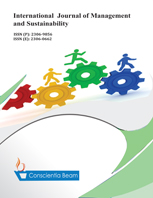The Sudan Civil Service: One Century of Development
DOI:
https://doi.org/10.18488/journal.11/2015.4.3/11.3.60.74Abstract
This paper seeks to explore and explain quantitative growth of the Sudan Civil Service throughout the 20th Century. The basic contention is that such growth is explainable in terms of political regime orientations and responsiveness, on the one hand, and citizens’ demands for services on the other. It adopts an historical approach involving comparison of civil service growth across political regimes. Thus, the colonial regime established law and order and cared about provision of services and infrastructure through bureaucracy. The first post-independence regime localized the civil service and created too many ministerial posts, departments and jobs to cope with escalating demands for services and development. The next socialist military regime, in line with its ideology, chose to enlarge the public sector and introduce far reaching measures of decentralization resulting in more responsive governance that led to further growth of bureaucracy. The final escalation of civil service growth took place during the period of 1989-2000 and continued up to the present. At the outset the incumbent Islamic government sought to downsize the large public sector, but ended up introducing a federal system for the first time in the country leading to more autonomy and responsiveness, eventually increasing public employment.

